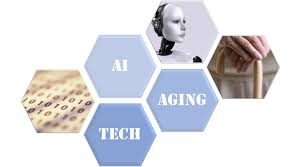It’s a common refrain in senior living that today’s assisted living communities are closer to yesterday’s skilled nursing facilities.
Seekers of Meaning Podcast Posted Online March 7, 2025
What's Next Longevity Deal Talk Episode 32, January, 2025
What's Next Longevity Venture Summit, June, 2025

 These two letters, AI, have risen to top of tech talk and media minds.
These two letters, AI, have risen to top of tech talk and media minds.  Parks Associates' update this week is illuminating. In offering up a
Parks Associates' update this week is illuminating. In offering up a  Can tools like ChatGPT and DALL-E be helpful to older adults?
Can tools like ChatGPT and DALL-E be helpful to older adults?  The articles and tech industry focus on ‘aging in place’ and fear. And it’s not unlike the ‘I’ve Fallen and I can’t Get Up’ fear.
The articles and tech industry focus on ‘aging in place’ and fear. And it’s not unlike the ‘I’ve Fallen and I can’t Get Up’ fear.  2023 begins with so many announcements, so little time. The first big event, CES 2023, brought multiple startups and stalwarts to Las Vegas. Ironically, it was not the big tech news of the month – eclipsed by an OpenAI introduction that had appeared in November, but was suddenly noticed
2023 begins with so many announcements, so little time. The first big event, CES 2023, brought multiple startups and stalwarts to Las Vegas. Ironically, it was not the big tech news of the month – eclipsed by an OpenAI introduction that had appeared in November, but was suddenly noticed